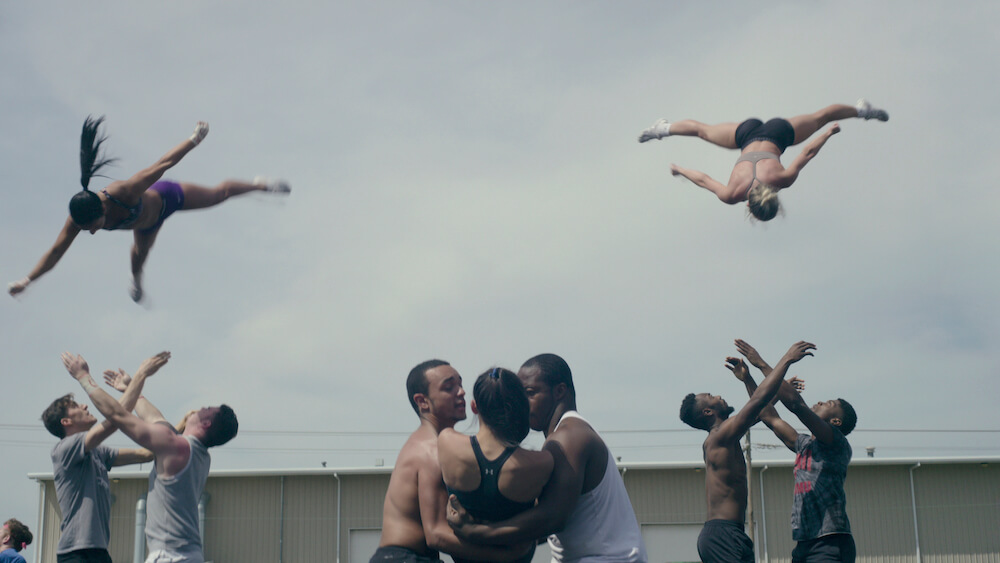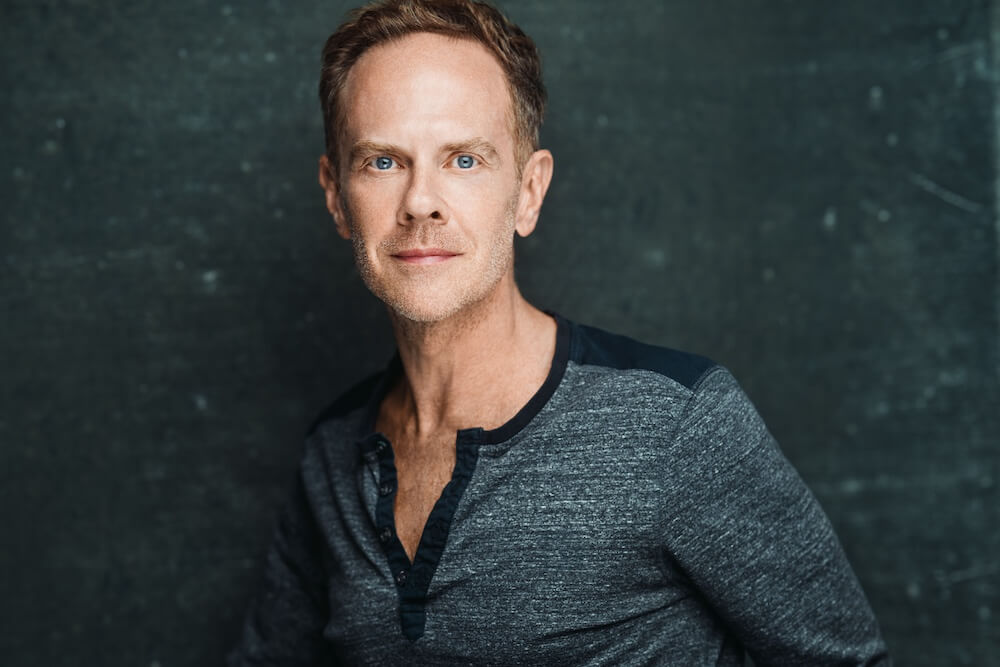Starting from around age three, I was resolutely a bunhead. A few times a week (or, eventually, every day) I would wrestle pins into my coiled hair and wriggle into a leotard that was color-coded to indicate the level at which I was dancing. I stretched fastidiously, and arriving late to ballet class ranked among my chief anxieties in life (yes, I had an exceedingly comfortable childhood). Still, some days I didn’t want to go to dance class. I would dawdle and complain as I got ready, occasionally bursting into tears on the way to the studio. One afternoon, exasperated with my latest round of protestations, my dad asked me why on earth I insisted on doing ballet—it didn’t seem like I was having much fun with this expensive and time-consuming hobby. Indignant, I retorted “I don’t do ballet because it’s fun, I do it because I have to.”
Perhaps the stars of Cheer have a similar mantra.
For those who didn’t spend the month of January applying Instagram story filters to determine which character from the series they most resemble, Cheer is Netflix’s latest buzzy documentary series. Particularly popular within the dance and performance world, the show tracks the cheerleading team of Navarro College, a rural Texas community college, as they go through grueling training in preparation for the national championships in Daytona Beach, Florida. Viewers watch as coach Monica Aldama deliberates over which of the cheerleaders will actually get to compete in the finals, a few of the cheerleaders visit their hometowns, and others carefully prepare posts for social media.
But, more than anything else, the cameras of Cheer are steadfastly trained on cheerleaders pushing their bodies toward ever greater extremes. In tightly framed shots, legs are pulled to faces, necks stream with sweat, airborne torsos slam into waiting arms over, and over, and over again. At the end of the first episode, two girls are sitting out with concussions and someone’s nose is bleeding. Then a third girl crashes to the ground. At one point, cheerleader Allie Ross explains with an impassive face that concussions are to be expected: she’s had at least five.
Amidst all this physical pain, it’s easy to wonder why these kids keep going. Watching Cheer, I found myself reaching for Lauren Berlant’s Cruel Optimism*, hoping to uncover, if not an explanation, then at least a framework for understanding this fierce attachment to an unforgiving activity.
Drawing from queer theory and affect theory, Cruel Optimism attempts to understand why people remain resolutely committed to things—people, habits, visions of the good life—that hurt them. The nature of these problematic attachments is what Berlant calls “cruel optimism,” a situation in which the object of one’s desire gets in the way of one’s own flourishing. Using this conception, it isn’t too difficult to find cruel optimism in the world of Cheer. Cheerleading undoubtedly harms the Navarro athletes both physically and financially—cheerleading is an expensive sport, and the cheerleaders freely acknowledge that the field holds few job prospects (there is no professional competitive cheerleading). And yet the cheerleaders dedicate the bulk of their waking hours to the sport, at the expense of school and all other interests (sound familiar, pre-professional dancers?). I don’t think it’s a stretch to label the cheerleaders’ relationship to their sport a cruelly optimistic one.
But beyond coining a new term for describing this dynamic, Berlant can help us understand the context in which cruelly optimistic relationships arise. Looking at the contemporary landscape, Berlant sees an increasingly precarious world: employment is rarely stable, inequality is ever-increasing, and upward mobility seems to be a dwindling fantasy. Traditional visions of the good life (home ownership, health care, general stability) are slowly crumbling, but new ones have not yet arisen to take their place (at least not on a mass scale). Berlant describes this situation as an “impasse,” an in-between state in which one must be hyper-vigilant, constantly improvising new ways in which to manage an ongoing crisis. To a certain extent we are all in this state of impasse, but the situation is heightened for those in marginalized subject positions. Existing in a state of constant precarity leaves one scrambling for something to hold onto, a sort of scaffolding with which to structure one’s existence. In this context, it can feel necessary to remain firmly bound to any relationship that provides some hope, even if it is cruel.

At first glance, the creators of Cheer seem to be framing the cheerleader’s experiences in terms of personal trauma rather than structural impasse. As the backstories of the central cheerleaders are revealed, it seems that each has had a formative experience more devastating than the next: Lexi got into a series of violent fights in high school, Jerry’s mother died of cancer, La’Darius became suicidal in the wake of abuse, and Morgan was abandoned in a trailer by her father.
Each of these stories are presented as exceptional, and yet it’s possible to glimpse shadows of the structural pressures that underlie and frame them. When describing his mother’s fatal cancer diagnosis, Jerry first mentions that they had recently been evicted and were living on food stamps. La’Darius felt particularly isolated in the aftermath of his abuse because his mother was in and out of prison and he was being bullied by those close to him for being gay. When familial and financial systems are failing you, why not go somewhere where you can work hard, feel valued, maybe dissociate for a while? Lexi cuts right to the chase in the first two minutes of the series’ pilot: “There are some times, like I’ll accidentally land wrong and it’s just … it’s terrible pain. But, it’s worth it. I mean, I was saved by cheer.”
You can almost lay out a blueprint for the cycle: fraying structures for existing in the world > impasse > attachment > harm > reaffirmed/continued attachment. Rinse, repeat. It’s a nice formula. I can even apply it to myself. (Of course, the formula doesn’t get it quite right. And, awkwardly, I can see that crafting a formula in an attempt to reach some sort of clear understanding, even just writing this essay in an attempt to narrativize messy attachments, might betray my own cruel optimism. But I haven’t yet learned to detach from this desire for clarity, so here we are.)
I was committed to dance at a young age, but it’s possible that at some point I would have stopped, learned to attach to something a little more fun. I had a pretty privileged upbringing, so I may have felt myself to be less acutely in a state of impasse than many of the kids on Cheer. But then I got cancer and life started to feel a little more unsteady. Ballet seemed to be as good a method as any to exert some control over my unruly body. As I got older, dance became a place in which I could exist outside of any overdetermined sense of self (contradictory, I know! I wanted to control myself and escape myself at the same time—still do!), and I could be at least somewhat to the side of (even if never truly outside of) the precarity and destructiveness of the political and economic world. Dance came to serve as a coping mechanism even as it helped fuel the self-criticism and perfectionism that made me anxious and depressed.
It isn’t logical, but I think it makes some sense. The world is traumatizing and uncertain so we latch onto [dance, cheerleading] as a way to get some version of stability or clarity or control (even if it’s only control over our own bodies). Then [dance, cheerleading] hurts us, but even that hurt isn’t quite as scary as not having anything to latch onto at all. So, we keep going back for more, even if concussions and cracked ribs and anxiety come along for the ride. As Berlant writes, “even when it turns out to involve a cruel relation, it would be wrong to see optimism’s negativity as a symptom of an error, a perversion, damage, or a dark truth: optimism is, instead, a scene of negotiated sustenance that makes life bearable as it presents itself ambivalently, unevenly, incoherently” (p. 14).
So, why do the cheerleaders keep doing this to themselves? Because they have to. Because they’ve experienced traumatic events in the midst of ongoing structural crisis and need to figure out how to deal, adjust, stay above water.
Of course, there’s a little bit more at play here because the Navarro cheerleaders aren’t just developing personal strategies for survival. They are also performing at a national scale, with all the projection and symbolism that brings. Tumbling and posing on our laptops, the Navarro cheerleaders become embodiments of both the persistence of the American Dream and its deterioration. They reveal that the true equation of the American Dream was never hard work + talent = stable job prospects. It was always hard work + talent + social status + patriotism = ??? The Navarro athletes sweat and grit their teeth and lather themselves into good spirits with no expectation of a job at the other end. They know that this sport offers no rewards (at least, none that are recognizable outside of the sport’s own ecosystem), and they work hard anyway. Isn’t this what capitalism has wanted from us all along?
As I reached the final episode of the series, I was fascinated by how thoroughly the cheerleaders personified this ambivalence. On the one hand, the final minutes of the show seemed dedicated to reiterating traditional visions of the good life. Worrying about Lexi’s future, coach Monica launches into an incantation of the American Dream:
“Don’t you want a job where you can buy a car if you wanna go buy a car? You can buy a house if you wanna buy a house? Don’t you want a husband who is gonna treat you like a queen, but that works hard and has a good job and that can buy you that things that you want? That y’all can have children and you can raise them better than you’ve ever had it?”
And La’Darius harbors similar hopes for a conventional American adulthood:
“I see myself, like, having a family. Having the house I’ve always dreamed of. It’s not like, rich lifestyle, but it’s, like, a comfortable lifestyle where I know that I will never have to struggle again. … But, if all else fails, if I can’t do what I want to do in life, I’m going to the military … because I want stability. And it’s about what I can do for my future and what I can do for my country. Cause I love America so much.”
I was surprised to hear La’Darius articulate such a normative vision for his future. Was this his attempt to uphold the role that cheerleaders have played for so long? As Natalie Adams, a historian who studies cheerleading, says in one episode, “cheerleaders represent this eternal American optimism.” It seems that even if attachment to cheerleading arises out of the impasse produced by the American Dream’s instability, attachments to that old fantasy of the good life may still linger—it’s certainly possible to have more than one cruelly optimistic relationship.
Still, other cheerleaders seem to have gone somewhat farther towards detaching from traditional visions of success and stability. Confronted by her parents’ demands to make plans for the future, Gabi zones out or shuts down. And a number of the athletes are lingering in the world of competitive cheerleading for as long as possible—according to their Instagram accounts, Lexi, La’Darius, and Jerry are all back at Navarro this year, even though at the end of the show it seemed they would be moving on. (Owing to a National Cheerleading Association rule that allows athletes to compete for five years, many of the athletes return to cheer for Navarro for a third season even though it is typically a two-year college).
So, even as some of the cheerleaders gesture toward normative American fantasies, many seem to follow up with a shrug. And why shouldn’t they? The pillars of traditional good-life fantasies—the nuclear family, capitalism—haven’t done much for these kids so far. If they’ve finally landed on a mode of survival that (mostly) works, it makes sense that they wouldn’t be in a rush to leave it behind.
At the end of Cruel Optimism, Berlant attempts to think her way towards a theory of detachment: if many of our relationships are cruel but necessary, is there a way to negotiate healthier attachments that won’t send us reeling in the process? She doesn’t offer a particularly clear or easy way forward. Maybe I’ll have to resort to optimism (though I don’t think it’s too cruel this time) and hope that the cheerleaders of Navarro will eventually improvise their way into new attachments, perhaps less painful ones.
*Lauren Berlant, Cruel Optimism. Durham, NC: Duke University Press, 2011. 342 pp.






